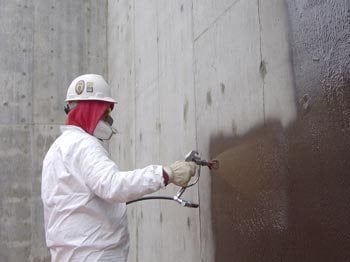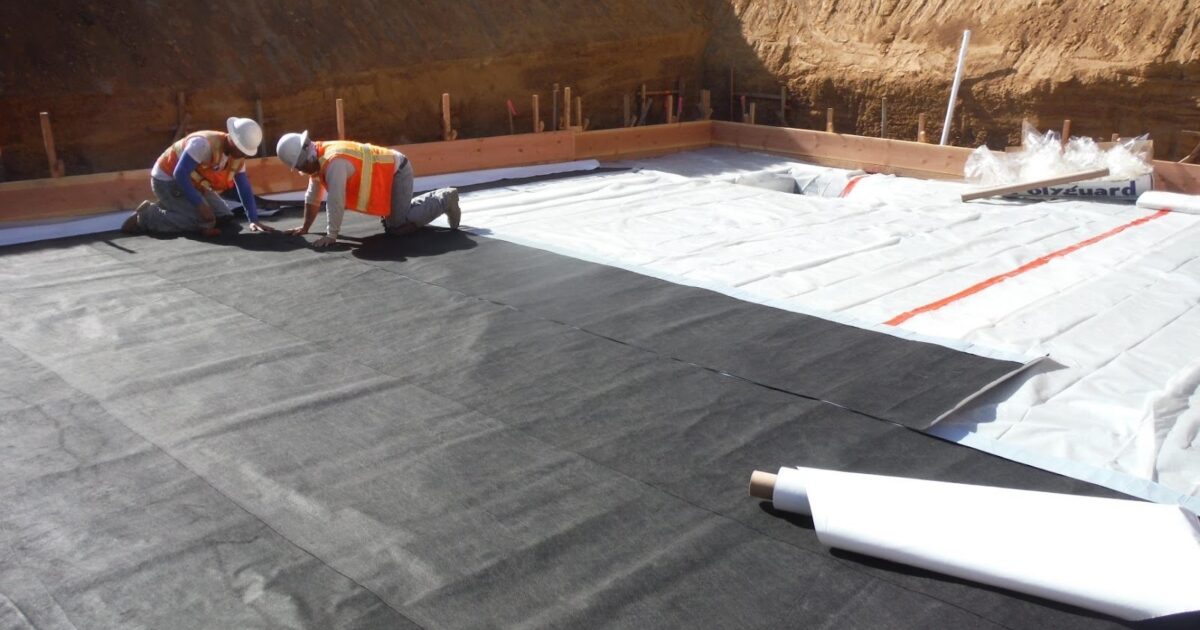Drainage & waterproofing company Omaha: How to Choose the Right One
Wiki Article
Kinds of Waterproofing: Discovering the Different Techniques and Their Applications
Waterproofing is an important element of building and maintenance. It secures structures from the harmful impacts of water damage. There are several approaches available, each with its one-of-a-kind applications and benefits. From membrane systems to cementitious remedies, recognizing these alternatives is essential for efficient implementation. The selection of waterproofing approach can significantly influence sturdiness and long life. Exploring these numerous strategies reveals their distinct advantages and potential obstacles, prompting additional consideration of suitable services.Membrane Waterproofing Solutions
Membrane layer waterproofing systems function as a critical barrier versus water intrusion in various structures. These systems commonly contain slim sheets made from materials like rubber, polycarbonate, or bitumen, which are put on surfaces to stop moisture penetration. They can be mounted over or below grade and are specifically effective in locations vulnerable to high water exposure, such as cellars, roofing systems, and foundations.The installment process includes cleansing the substratum, applying adhesives or guides, and exactly fitting the membrane layer to guarantee complete insurance coverage. Membrane layer systems can be either fully stuck, mechanically affixed, or laid loose, depending on the particular requirements of the job. They supply toughness and adaptability, accommodating structural movements without compromising their waterproofing capabilities. These systems can be strengthened with added layers for enhanced defense. Inevitably, membrane layer waterproofing systems are essential for protecting frameworks versus water damage and keeping lasting stability.Liquid-Applied Waterproofing Coatings
Liquid-applied waterproofing finishes supply a versatile service for securing surface areas from water seepage - Drainage & waterproofing company Omaha. These finishings consist of liquid materials that, when applied, develop a smooth, versatile membrane. Their flexibility enables application on numerous substrates, consisting of concrete, steel, and wood. The finishes can be made use of in varied atmospheres, from property to industrial settings, making them ideal for roof coverings, structures, and below-grade structures.One considerable advantage of liquid-applied coverings is their capability to adhere to irregular forms and pass through splits, creating a durable obstacle against dampness. They usually display outstanding adhesion residential properties and resistance to UV radiation, making certain durability and sturdiness. Additionally, the application procedure is normally simple, enabling for quick installment and lowered labor prices. This approach additionally minimizes the danger of water pooling, as the constant layer efficiently directs water far from at risk locations. Overall, liquid-applied waterproofing finishings are an efficient selection for comprehensive water defenseCementitious Waterproofing Solutions

Cementitious waterproofing options supply a durable alternative for frameworks calling for dependable wetness security. These systems largely utilize a blend of cement, sand, and chemical additives to develop a water resistant obstacle. They are typically related to surface areas such as concrete wall surfaces, structures, and floorings, supplying a durable, lasting defense against water intrusion.One of the essential advantages of cementitious waterproofing is its simplicity of application; it can be applied utilizing a brush, roller, or spray, making it suitable for different task dimensions. In addition, this technique is suitable with numerous surfaces and can typically be made use of along with other waterproofing techniques.Cementitious options are specifically effective in environments where water direct exposure is a worry, such as cellars or below-grade structures. Their outstanding bond residential properties assure that they bond well with substratums, supplying a solid and impermeable layer versus moisture infiltration.
Bentonite Waterproofing
Bentonite waterproofing is an extremely reliable approach that utilizes sodium bentonite clay to develop an all-natural obstacle versus water. This strategy makes use of the unique residential or commercial properties of bentonite, which expands upon call with water, securing any prospective leaks and avoiding dampness seepage. It is frequently used in different applications, including structure walls, passages, and keeping walls, where water resistance is essential.Bentonite can be used in several types, such as panels or blankets, offering convenience in installment. Its basement foundation repair capability to self-seal makes it an attractive choice for locations subject to shifting soil or fluctuating water levels. Furthermore, bentonite waterproofing is eco-friendly, as it is an all-natural material that does not introduce dangerous chemicals into the surroundings.Drainage and Exterior Waterproofing Systems
Effective waterproofing often entails a mix of approaches, including drainage and image source exterior systems. Water drainage systems, such as French drains and sump pumps, are made to redirect water away from frameworks, reducing hydrostatic pressure against foundations. These systems are vital in preventing water accumulation that can lead to architectural damage and mold growth.External waterproofing, on the other hand, includes applying safety barriers to the structure's exterior. Methods such as the installment of water-proof membranes, coatings, or sealers can assist prevent water seepage. This method not only protects the structure yet also improves the overall durability of the structure.Together, water drainage and exterior waterproofing systems form a detailed option to manage water successfully. By applying these approaches, residential property proprietors can secure their financial investments versus the damaging results of moisture, ensuring long-term stability and safety and security for their buildings.Regularly Asked Inquiries
How Do I Pick the Right Waterproofing Method for My Project?
Picking the best waterproofing approach depends on aspects such as task kind, ecological conditions, budget, and preferred long life. Examining these elements enables educated decisions customized to certain needs and needs.
Can Waterproofing Be Applied in Cold Weather Condition Conditions?
Waterproofing can be used in winter problems, yet it calls for particular products and strategies. Cold temperatures may affect healing times and bond, demanding mindful choice of products developed for low-temperature application.
What Are the Usual Indications of Waterproofing Failure?
Typical indicators of waterproofing failing consist of noticeable water discolorations, peeling paint, damp odors, mold growth, and fractures in wall surfaces or foundations. Sump pump discharge drainage Omaha. These indications suggest that moisture is penetrating the barrier, compromising its performanceHow Much Time Does Waterproofing Last Before Requiring Maintenance?
The longevity of waterproofing varies, typically lasting in between 5 to ten years. Factors such as worldly high quality, ecological problems, and maintenance techniques influence its sturdiness, requiring regular examinations to ensure effective security versus water breach.Are There Eco-Friendly Waterproofing Options Available?
The concern of eco-friendly waterproofing choices exposes a growing passion in sustainable materials (French drain installation Omaha). Numerous all-natural compounds, such see it here as plant-based sealants and recycled items, use efficient options while decreasing environmental impact, attracting ecologically aware customersReport this wiki page